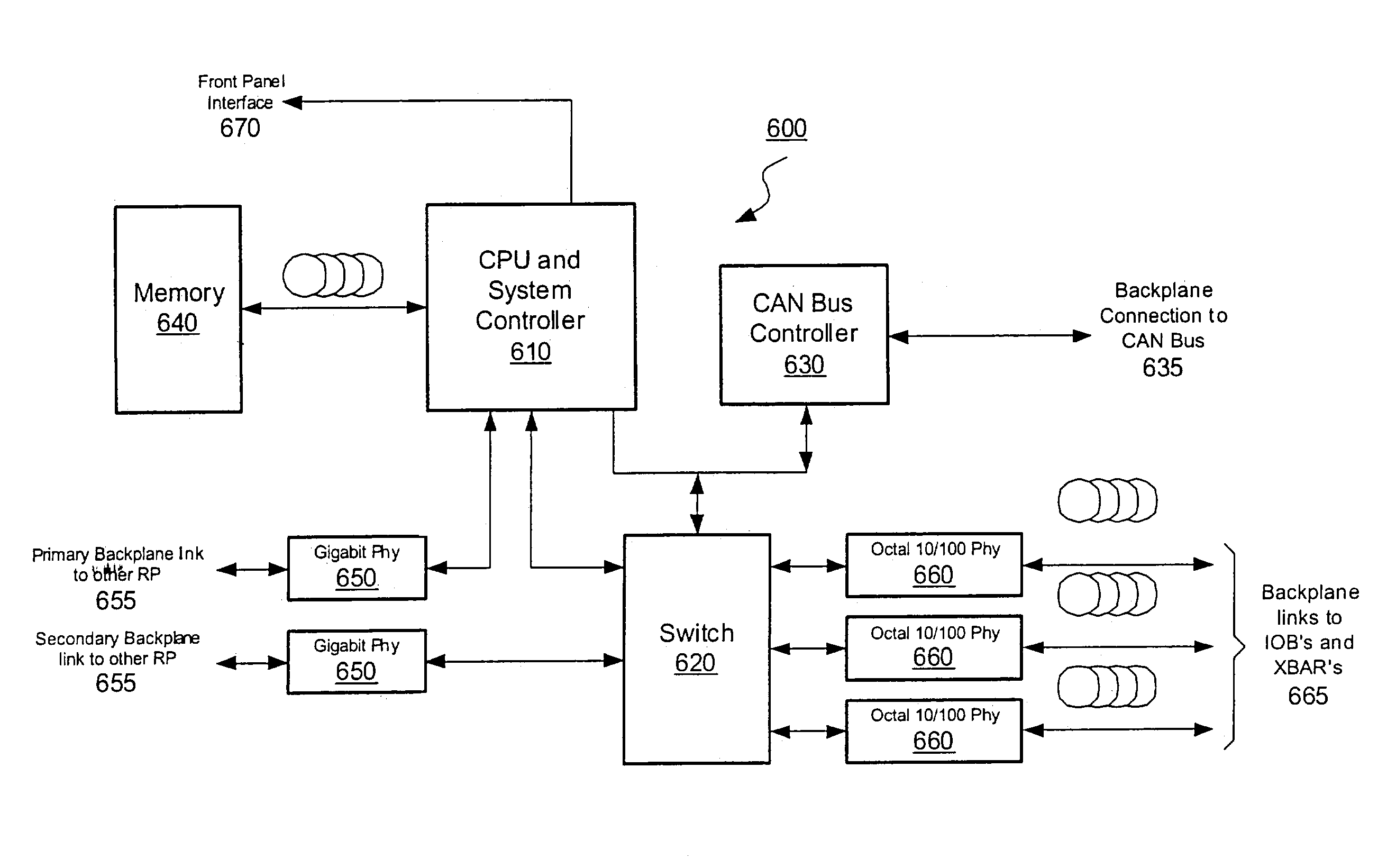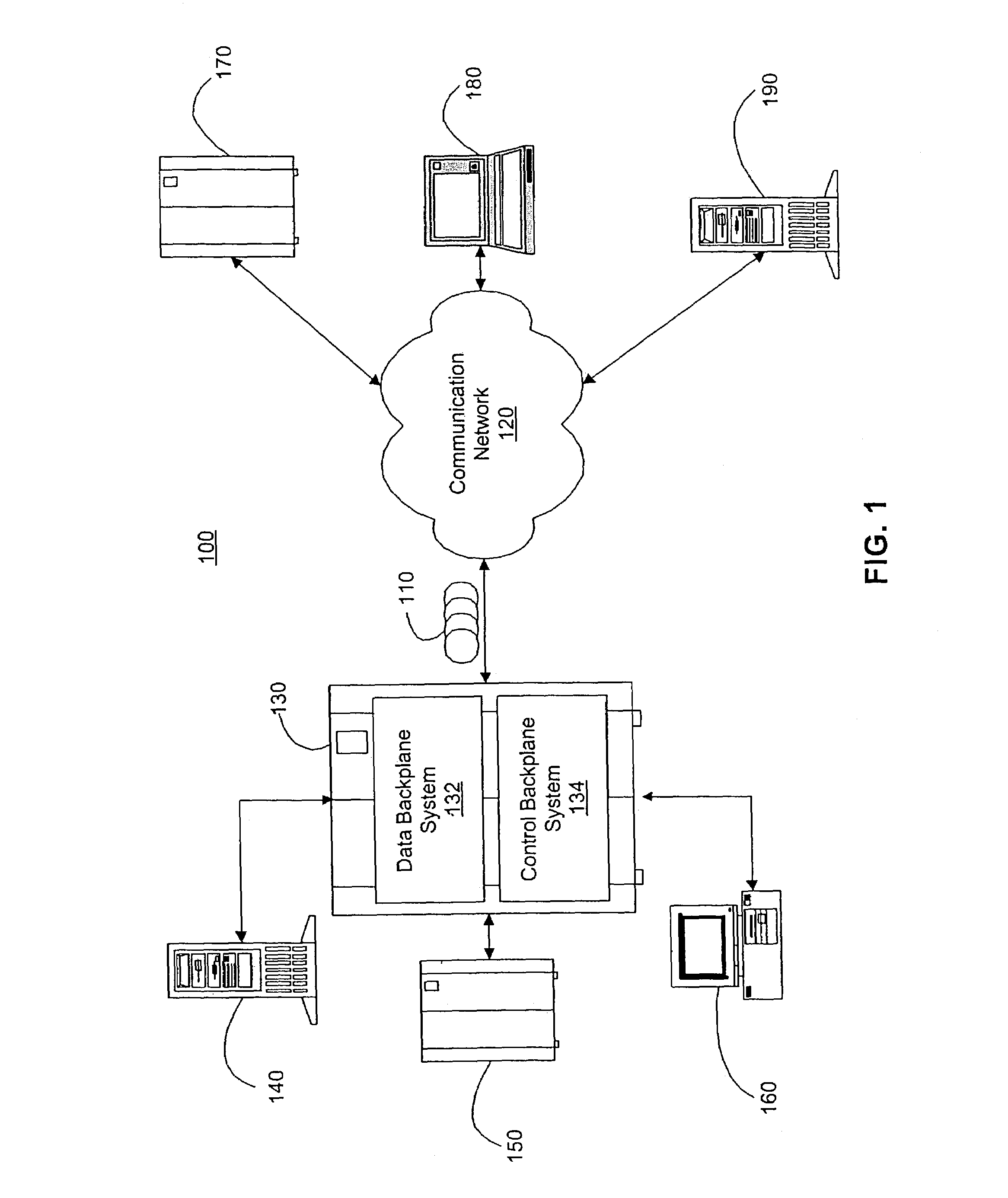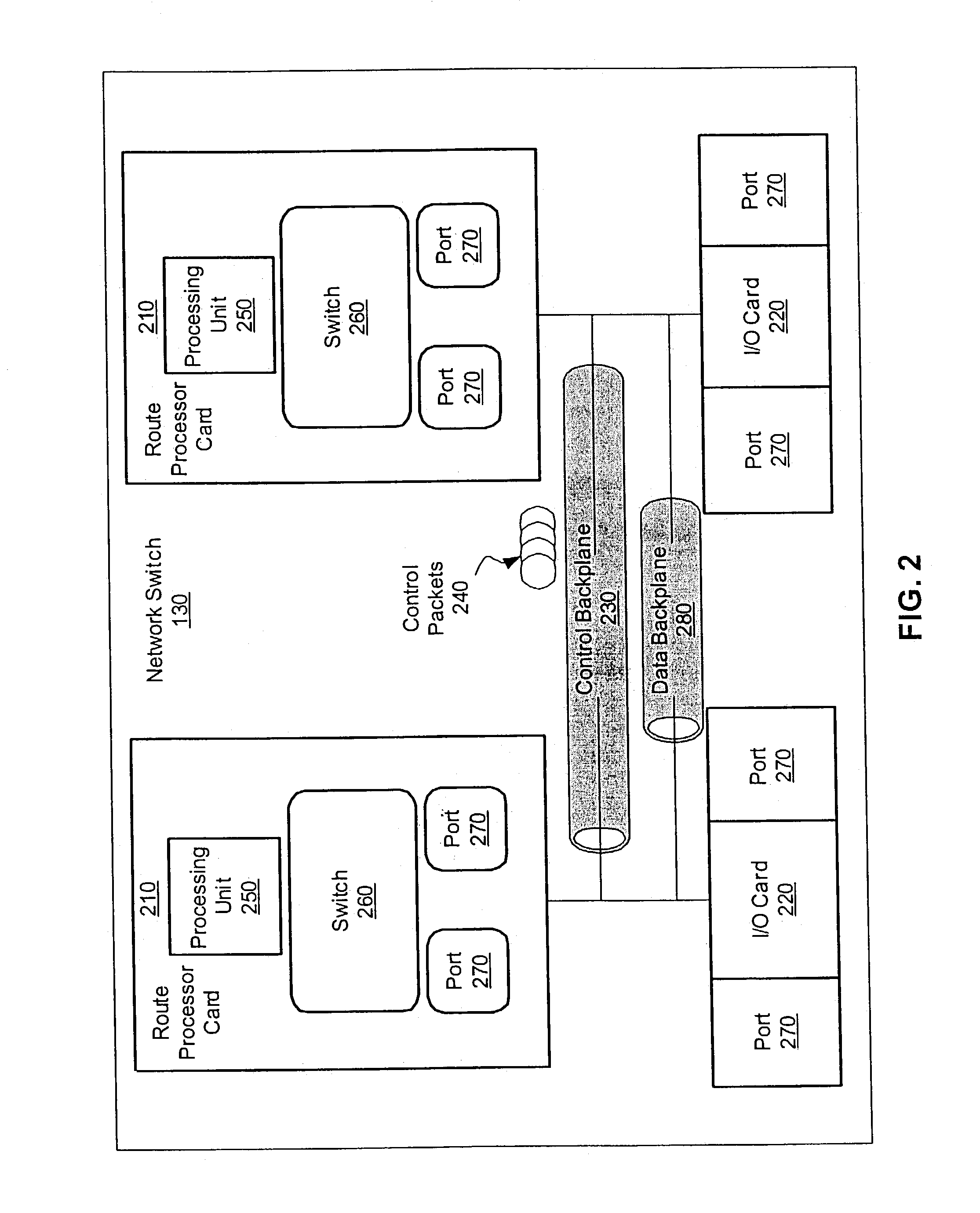Method and apparatus for a control communication channel in a packet-forwarding device
a packet-forwarding device and communication channel technology, applied in the field of network device architecture and operation, can solve the problems of wasting valuable processor resources, adding to coordination complexity, and huge differences in time constraints associated with various control functions, so as to improve reliability, reduce congestion, and improve scalability
- Summary
- Abstract
- Description
- Claims
- Application Information
AI Technical Summary
Benefits of technology
Problems solved by technology
Method used
Image
Examples
Embodiment Construction
[0020]In the following description various aspects of the present invention, a method and apparatus for using Ethernet as a control communication channel in a packet-forwarding device will be described. Specific details will be set forth in order to provide a thorough understanding of the present invention. However, it will be apparent to those skilled in the art that the present invention may be practiced with only some or all of the described aspects of the present invention, and with or without some or all of the specific details. In some instances, well known architectures, steps, and techniques have not been shown to avoid unnecessarily obscuring the present invention. Reference in the specification to “one aspect of the invention” or “one embodiment” or “an embodiment” means that a particular feature, aspect, structure, or characteristic described in connection with the embodiment is included in at least one embodiment of the invention. The appearances of the phrase “in one em...
PUM
 Login to View More
Login to View More Abstract
Description
Claims
Application Information
 Login to View More
Login to View More - R&D
- Intellectual Property
- Life Sciences
- Materials
- Tech Scout
- Unparalleled Data Quality
- Higher Quality Content
- 60% Fewer Hallucinations
Browse by: Latest US Patents, China's latest patents, Technical Efficacy Thesaurus, Application Domain, Technology Topic, Popular Technical Reports.
© 2025 PatSnap. All rights reserved.Legal|Privacy policy|Modern Slavery Act Transparency Statement|Sitemap|About US| Contact US: help@patsnap.com



